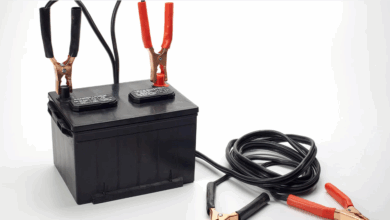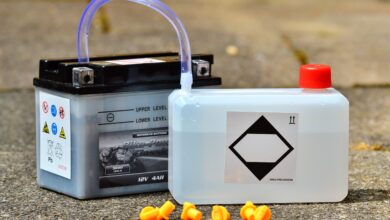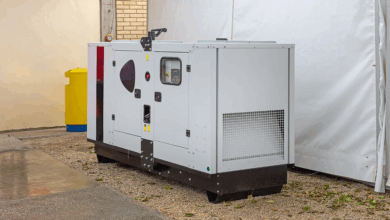Avoid Deadly Mistakes: How to Safely Hook Up Your Generator to Your House

Avoid Deadly Mistakes: How to Safely Hook Up Your Generator to Your House
Power outages can range from minor inconveniences to serious disruptions, leaving us without lights, heat, refrigeration, and the ability to power essential medical equipment. Owning a portable generator seems like the perfect solution – a reliable source of backup power when the grid goes dark. However, wielding this power comes with significant responsibility. Improperly connecting a generator to your home’s electrical system is not just risky; it can be deadly, both for you and for utility workers.
This article will walk you through the crucial steps to safely integrate a generator with your home, highlighting the "deadly mistake" you absolutely must avoid and guiding you towards the only safe methods approved by electrical codes and experts.
The Deadly Mistake: Backfeeding
Imagine a utility line worker, high on a pole, repairing a damaged power line during an outage. They’ve followed all standard safety protocols, believing the line is de-energized. What they don’t know is that your generator, improperly connected to your house, is pumping electricity back out onto the grid. This phenomenon is called "backfeeding."
Backfeeding is the single most dangerous mistake generator owners make. It occurs when a generator is directly plugged into a wall outlet (sometimes using dangerous, homemade "suicide cords") or connected to the house wiring without a critical safety device. The electricity from your generator bypasses safety measures and flows out of your home, energizing the power lines outside.
The consequences of backfeeding are severe and potentially fatal:
- Electrocution of Utility Workers: Workers repairing lines assume they are dealing with dead wires. Your backfeeding generator turns those wires live, leading to severe injury or death by electrocution. This is the most tragic outcome.
- Damage to Your Generator and Appliances: Backfeeding can cause a dangerous surge of electricity when utility power is restored, potentially destroying your generator and damaging your home’s sensitive electronics and appliances.
- Fire Hazard: Improper wiring and overloaded circuits caused by unsafe connections can lead to electrical fires.
In short, plugging a generator into a wall outlet to power your house is equivalent to pointing a loaded gun at anyone working on the power lines. It is illegal, dangerous, and must never be done.
The ONLY Safe Ways to Connect a Generator to Your House
So, if plugging into an outlet is out, what are the safe alternatives? There are primarily two code-approved methods that prevent backfeeding by ensuring your house is physically disconnected from the utility grid before the generator is connected.
-
Manual Transfer Switch (MTS): The Gold Standard
- What it is: A manual transfer switch is a dedicated electrical panel or a switch installed between your main breaker panel and the meter. It’s specifically designed to allow you to switch your home’s power source from the utility grid to your generator, and crucially, it makes it physically impossible for both sources to be connected simultaneously.
- How it works: The transfer switch has a ‘Utility’ position and a ‘Generator’ position. When utility power is on, it’s in the ‘Utility’ position. During an outage, you follow a strict sequence: Turn off the main breaker (or switch the MTS to ‘Off’), start your generator outside, then flip the transfer switch to the ‘Generator’ position. This isolates your house from the grid. When utility power returns, you reverse the process: Flip the transfer switch back to ‘Utility’ (or ‘Off’), shut down the generator, then turn the main breaker back on.
- Benefits: This is the safest and most convenient method for powering multiple circuits in your home. You select which circuits the generator will power (often essential ones like lights, refrigerator, furnace fan, specific outlets) and wire them directly to the transfer switch panel. No extension cords running through the house for those circuits.
- Installation: This requires significant electrical work and must be installed by a licensed, qualified electrician according to local and national electrical codes (like the National Electrical Code – NEC). They will ensure correct wiring, proper sizing, and code compliance.
- Generator Interlock Kit:
- What it is: An interlock kit is a mechanical sliding plate installed on your main breaker panel. It physically prevents the main utility breaker and a dedicated generator breaker (installed in your panel) from being in the "on" position at the same time.
- How it works: To use it, you first slide the interlock plate to block the main breaker from being turned on. Then, you turn off the main breaker. This allows you to then turn on the dedicated generator breaker. When utility power returns, you reverse the process: Turn off the generator breaker, slide the interlock plate to block the generator breaker, and then you can turn the main utility breaker back on.
- Components: This method requires installing a dedicated generator breaker in your main panel, a power inlet box on the exterior of your house (where you connect the generator via a specific cord), and the interlock kit itself on the panel cover.
- Benefits: It’s generally less expensive to install than a full transfer switch panel, as it utilizes your existing main panel. It also prevents backfeeding by mechanically enforcing separation.
- Installation: Like a transfer switch, installing an interlock kit, the dedicated breaker, and the external power inlet box involves working inside your main electrical panel and running exterior wiring. This is complex and hazardous work that must be performed by a licensed electrician familiar with your specific panel type and local codes. Not all panels are compatible with interlock kits, and finding a compatible, listed kit is essential.
Using Extension Cords (For Individual Appliances Only)
A third, safe method for using a generator is to power individual appliances directly using heavy-duty, outdoor-rated extension cords.
- How it works: You run a proper gauge extension cord from the generator (placed safely outside) directly to the specific appliance you want to power (e.g., a refrigerator, a lamp, a medical device).
- Limitations: This method is safe only because it does not involve connecting the generator to your home’s wiring system in any way. It’s suitable for powering a few essential items but becomes cumbersome and impractical for powering multiple rooms or hardwired systems like furnaces.
- Safety Points: Use only appropriately sized cords (too thin a cord is a fire hazard), avoid running cords under carpets or through doorways where they can be pinched or damaged, and ensure cords are in good condition. Never cut off the end of an extension cord to wire it directly into house wiring or plug it into an outlet.
Why Professional Installation is Non-Negotiable
You might be tempted to save money by attempting to install a transfer switch, interlock kit, or power inlet box yourself. Do not. Working inside a main electrical panel is extremely dangerous. The wires are live even during an outage unless the utility physically disconnects your service (which they won’t do just for generator installation).
A licensed electrician has the knowledge, training, tools, and experience to:
- Safely work with high-voltage electricity.
- Understand your home’s specific wiring configuration and panel capacity.
- Select the correct transfer switch or interlock kit compatible with your panel.
- Properly size the generator breaker and associated wiring.
- Install an outdoor-rated power inlet box securely and correctly.
- Ensure the entire installation meets the stringent requirements of the National Electrical Code (NEC) and local building codes.
- Obtain necessary permits and arrange for inspection, which ensures the work was done correctly and safely.
Improper wiring can lead to backfeeding, overloaded circuits, fires, or damage to your electrical system. The cost of hiring a professional electrician is a small price to pay for your safety, the safety of utility workers, and the integrity of your home’s electrical system.
Safe Generator Operation (Beyond Hookup)
Even with a safe connection method installed, proper generator operation is critical:
- Location: Always run generators outside and at least 15-20 feet away from your house, windows, doors, and vents to prevent deadly carbon monoxide (CO) fumes from entering your home. Position the exhaust away from occupied areas.
- Carbon Monoxide Detectors: Install battery-operated CO detectors inside your home, especially near sleeping areas, and check them regularly. CO is colorless, odorless, and lethal.
- Fueling: Shut the generator off and let it cool completely before refueling. Gasoline is highly flammable. Store fuel safely in approved containers away from living areas and ignition sources.
- Grounding: Consult your generator’s manual. Some generators require grounding (connecting the generator frame to a grounding rod driven into the earth) to prevent electric shock. Your electrician can advise on this during installation of your safe connection method.
- Load Management: Don’t overload your generator. Know its capacity and only power the essential circuits or appliances it can handle. Overloading can damage the generator and create fire hazards.
FAQs
-
Q: Can’t I just turn off my main breaker and then plug the generator into an outlet?
- A: NO, absolutely not. While turning off the main breaker might prevent backfeed if done correctly every single time, plugging the generator into an outlet (especially with a "suicide cord") is inherently dangerous. The cord itself is a hazard, and relying solely on remembering to flip a breaker every time is risky. A transfer switch or interlock kit provides a mechanical, fool-proof safety mechanism that prevents this dangerous scenario automatically. It’s the only reliable way to ensure separation.
-
Q: What size generator do I need?
- A: This depends entirely on what you want to power. You need to calculate the starting (surge) watts and running watts of the essential appliances and circuits. It’s best to consult an electrician who can help you assess your needs and recommend the appropriate generator size and connection method.
-
Q: What’s the difference between a transfer switch and an interlock kit?
- A: A transfer switch is a separate panel or switch that routes power from either the utility or the generator to selected circuits. An interlock kit is a plate that physically prevents the main utility breaker and a generator breaker in your existing panel from being on simultaneously. Both achieve the critical goal of preventing backfeed, but a transfer switch often offers more dedicated circuits and is a cleaner setup.
-
Q: Do I need a permit to install a generator hookup?
- A: Yes, in most places, significant electrical work like installing a transfer switch or interlock kit requires an electrical permit and inspection to ensure the work meets safety codes. Your licensed electrician will handle this process.
-
Q: How far away from the house does the generator need to be?
- A: A minimum of 15-20 feet is generally recommended, but always place it far away from any windows, doors, or vents to prevent carbon monoxide entry. Check your generator manual and local regulations.
- Q: Can I connect my generator directly to my house’s main electrical panel?
- A: Only through a code-approved method like a transfer switch or using an interlock kit with a dedicated generator breaker and external inlet box. Directly wiring the generator into the panel without one of these safety mechanisms in place is backfeeding and is lethal.
Conclusion
Having a generator provides invaluable peace of mind during power outages, but its safe use is paramount. The single, most dangerous mistake is backfeeding – sending power from your generator onto the utility grid. This risks the lives of unsuspecting utility workers and can damage your property.
The only safe, code-approved methods for connecting a generator to your house wiring are through a manual transfer switch or a generator interlock kit, installed in conjunction with a dedicated generator breaker and outdoor power inlet box. These systems provide a physical barrier, ensuring that your home is always isolated from the grid when running on generator power.
Attempting to install these systems yourself, or worse, resorting to dangerous methods like plugging the generator into a wall outlet, is a gamble with potentially fatal consequences. Protect yourself, your family, and utility personnel by investing in the proper equipment and, critically, hiring a qualified, licensed electrician to perform the installation. Safety is not an option; it’s an absolute necessity when harnessing the power of a generator. Don’t make a deadly mistake – do it the safe way.




![How to Bypass CO Sensor on Generator – [4-Step Safety Guide]](https://www.generator411.com/wp-content/uploads/2025/08/co-sensor-on-generator-390x220.png)